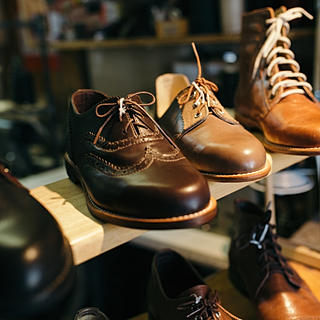The Standard Process of Shoe Manufacturing in Turkey: An Inside Look
- Altug Gokhan
- Apr 8
- 3 min read
Shoe manufacturing in Turkey boasts a rich history and plays a pivotal role in the global footwear industry. Renowned for high-quality craftsmanship and innovative designs, Turkey stands out as a key player in this market. The industry employs thousands, significantly enhancing the economy while preserving traditional methods. This article explores the standard process of shoe manufacturing in Turkey, detailing the stages from conception to the finished product.
The Design Phase
The journey of shoe manufacturing in Turkey begins with the design phase. Designers draw inspiration from global fashion trends, creating sketches and prototypes that align with market demands. This stage emphasizes creativity, where aesthetics meet functionality.
Designers choose suitable raw materials like leather, textiles, and synthetic options. For instance, Turkey is famous for its high-quality leather, sourced from local tanneries, ensuring that the final product is not only attractive but durable.
A design typically undergoes multiple iterations before a final prototype is approved. This thorough consideration guarantees that the shoe meets market needs while upholding high-quality standards.
Material Selection
After finalizing the design, sourcing materials becomes crucial. Turkey's reputation for high-quality leather is complemented by locally sourced textiles and rubbers, which helps manufacturers maintain a reliable supply chain and reduce lead times.
For example, sports shoes often require lightweight materials, while formal shoes prioritize more durable, premium leather. Quality control during material selection is vital. The choice of materials significantly affects the final product's durability and comfort. Studies show that using high-quality materials can extend the life of a shoe by up to 50%.
Cutting the Materials
Once materials are procured, the cutting process begins. The goal is to cut materials precisely according to the shoe design, minimizing waste. This step uses patterns and templates, often made from sturdy cardboard or plastic.
Modern factories frequently employ CAD (Computer-Aided Design) technology, enhancing precision and efficiency. Skilled workers then meticulously cut each piece to align with the design specifications, ensuring accuracy.
Assembling the Shoe
With all components ready, the assembly phase starts. Here, skilled artisans and workers play a crucial role. They carefully combine the shoe's upper, lining, and sole to create a cohesive final product.
The method of assembly varies by shoe type. In traditional leather shoes, for example, hand-stitching showcases the craftsmanship that defines Turkish shoemaking. Conversely, mechanized methods are often used in mass production, boosting speed and scalability. Reports indicate that assembly line methods can increase production efficiency by 30%.
Lasting Process
After assembly, the next step is lasting, where the shoe takes its final shape. This process involves placing the shoe on a last, which is a foot-shaped mold that gives the shoe structure.
The lasting method can differ among shoe types but generally includes techniques like cementing, stitching, or using heat to mold materials. This step is essential to ensure the shoe is comfortable and fits well. A well-lasted shoe can improve fit and comfort by up to 40%.
Finishing Touches
Following lasting, shoes receive final touches that bring the design to life. This stage includes applying coatings, adding insoles, and cleaning the product.
The finishing process often involves quality checks to guarantee that each shoe meets brand standards. Defective shoes are reworked or discarded at this stage to uphold quality assurance. The rejection rate for quality issues in reputable factories is typically less than 5%.
Packaging and Distribution
Once shoes pass quality inspections, they are packed and prepared for distribution. Packaging is crucial for branding, with manufacturers creating visually appealing boxes that reflect their brand identity.
The shoes are then shipped to various retailers or directly to consumers, based on their business model. Turkey's geographical location offers a logistical edge, allowing for efficient distribution across Europe and beyond, reducing shipping times by up to 20%.
The Role of Technology in Shoe Manufacturing
As global demand for shoes shifts, manufacturing processes evolve. Turkish factories are increasingly integrating technologies to boost efficiency and productivity. Automation and digital tools streamline design, production, and management, leading to quicker turnaround times and reduced costs.
Moreover, the adoption of sustainable materials and eco-friendly production methods is growing as consumers become more environmentally aware. This trend shows Turkey's commitment to staying competitive in the global footwear market.
The Big Picture
The shoe manufacturing process in Turkey is a blend of tradition and innovation. Every production stage, from design to distribution, highlights the country's expertise in creating high-quality footwear. As market demands change, Turkey is well-positioned to adapt, thanks to its skilled workforce and rich resources.
Understanding this process allows for a deeper appreciation of the complexities involved in Turkish shoe manufacturing. The country not only produces stylish and durable shoes but also contributes significantly to the economy and maintains a rich heritage of craftsmanship recognized around the world.





Comments